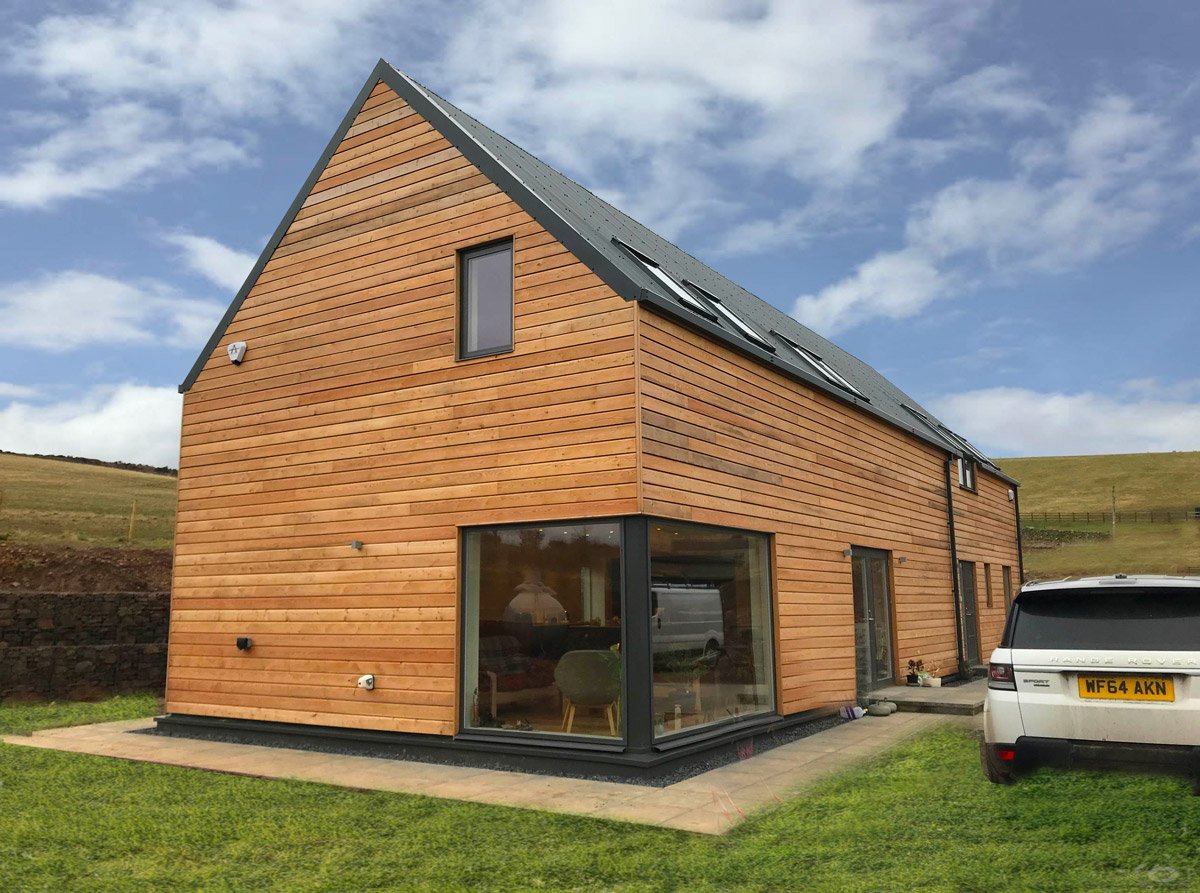HOW DOES MVHR WORK?
MVHR works by removing stale air from all rooms through a combination of ducts hidden throughout the home. The stale air is passed through a heat exchanger in the unit of the main system, commonly stored away in a loft or a cupboard. The system then supplies fresh, clean air to the rest of the home.
On average, almost 90% of the heat in the stale air is recovered. This heat would typically be lost in a more traditional ventilation system. The supply air tends to be only 1-1.5 degrees cooler than the extracted air, which allows you to decrease the demand on your heating system.
You can find out more about how an MVHR system works in our article here.

MVHR SYSTEMS REQUIRES A LOT OF MAINTENANCE – FALSE
MVHR systems may initially seem complex, but they have been specially designed for ease of use and require only basic maintenance. The extraction of stale air to provide clean, filtered air is an automatic process, with little to no human input.
The main maintenance comes from the cleaning and changing of the filters every 6 months. Most can be cleaned and used again before being replaced. The filter costs vary from £30 to £60 depending on the manufacturer and size of the unit. The heat exchanger also needs to be inspected every 2 to 3 years. It is removable and washable, and all maintenance on MVHR systems could potentially be carried out by the homeowner.
MVHR IS ONLY FOR NEW BUILDS – FALSE
Yes, fitting an MVHR system in a newly built home may be easier, but that doesn’t rule out the benefits brought to an existing home. Retrofitting older homes with the system will bring a noticeable enhancement to indoor air quality, energy efficiency, and bring a reduction in the carbon footprint.
Making the effort (and financial leap) to install the system in an older home is something to consider.

MVHR IS MORE EXPENSIVE THAN OTHER SYSTEMS – TRUE
MVHR is an advanced ventilation technology, which comes at a higher cost than other systems. It’s hard to put an exact price tag on the system since many variables and house sizes exist. Checkatrade estimates an average cost of £6,450 for a domestic MVHR installation.
The higher cost is mainly attributed to the intricate nature of installing the system in a home. It often requires professional installation expertise, which contributes to increased labour costs. Installing the ductwork for both the exhaust and supply air can be more time-consuming and requires more precision than simpler ventilation systems.
While the initial investment in an MVHR system might seem a little high, the long-term benefits far outweigh the costs. The reduction in heating bills, improved air quality, and potential increase in property value make MVHR systems a cost-effective solution in the long run.
MVHR MEANS ALL ROOMS WILL BE THE SAME TEMPERATURE – TRUE
Generally, this is the case. However, a few things can affect the temperature in each room.
Commissioning of the MVHR system can impact the temperature in each room. The use of room-specific radiators, such as towel radiators, can be used. In rare instances, a post-heater can be fitted if you want a certain room to be slightly warmer.
The ideal spread of temperature is 20℃ in main living areas (lounge, dining, kitchen, utility), 18℃ in bedrooms and 22℃ in bathrooms. However, this will depend on the efficiency of the MVHR system, the air-tightness result, and the thermal performance of your building.
MVHR SYSTEMS ARE VERY NOISY – FALSE
MVHR systems are typically quieter compared to older ventilation systems due to advancements in technology, but absolute silence may not always be achievable. While they’re designed to operate quietly, some level of noise is expected, particularly in larger or more complex systems.
ADM Systems believe the key to minimising noise is to ensure that your MVHR system is sized correctly for your property. If a system is undersized to suit a budget, then units would have to work too hard to achieve regulation airflows and potentially would be noisy. The location of the unit, positions of supply and extract points in rooms and quality of installation are all important factors. An MVHR system that follows these good practice principles will ensure that systems run quietly in the background and pose no intrusion to its occupants.

MVHR SYSTEM CAN BE INSTALLED BY A SELF-BUILDER – TRUE
Absolutely, MVHR systems can be installed by an aspiring self-builder. The radial semi-rigid duct system is very appealing to self-builders as it is easier, quicker, and more of a fail-safe ducting system for self-install.
Consulting with an architect specialising in Self Building could be the solution to a quick and stress-free installation. At AC Architects, we provide schematic layouts, installation instructions, technical support, and can even carry out site visits.
MVHR SYSTEM CAUSES ENERGY LOSS – VERY FALSE
MVHR systems have been designed to prioritise the conservation of energy. They recover and reuse the heat that would otherwise be lost when ventilating a building. By transferring heat from the outgoing stale air to the incoming fresh air, MVHR systems significantly reduce the overall heat loss, leading to lower energy bills and a fresher indoor living space.
AC Architects are vocal supporters of MVHR systems, as they align with our company values. Building homes with sustainability and energy efficiency in mind. By dispelling these myths, it becomes evident that these systems offer a multitude of benefits. We hope this article gives you more of an understanding of how an MVHR system works, and their contribution to a healthier and more energy-efficient living space.
For more Self Build advice, take a look at the learning centre or follow the link below to arrange a free initial consultation with one of our team.




